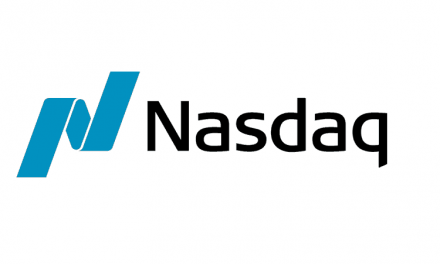In the contemporary landscape, artificial intelligence has emerged as a prevailing trend, rendering it unsurprising that investors are harnessing AI’s potential to gain an advantage in the investment domain. However, AI isn’t an exclusive concept reserved for the well-connected experts; even the general public can invest in exchange-traded funds (ETFs) that employ machine learning tools to analyze stocks, forecast upward trajectories, and subsequently make investment decisions.
The ensuing discourse unveils key insights about AI-driven funds and provides a snapshot of the currently active AI-powered funds.
Unveiling the AI-Powered Fund:
AI-powered funds are those that leverage machine learning to scrutinize and cherry-pick stocks or alternative investments. These funds don’t necessarily focus on investing in AI-centric companies like Nvidia. Instead, they exploit technology to uncover patterns within data and curate a portfolio of selected stocks.
In numerous instances, AI scours publicly accessible data points to gauge market sentiment towards stocks. This data might encompass inputs from social media, news outlets, financial statements, analyst evaluations, online discussion boards, and other sources that reflect market dynamics. Depending on its goals, AI might meticulously analyze financial data to foresee businesses likely to sustain strong performance. The outcome could be a compilation of recommended stocks for fund managers.
Certain AI models might not only identify attractive stocks but also suggest optimal investment volumes, albeit leaving the final verdict to human fund managers.
These models can simplify the task of identifying promising investments, potentially pinpointing traits correlated with exceptional performance. This could amplify the efficiency of fund managers, affording them more time to delve into comprehensive research and assess the value of potential investments.
Decoding the Pros and Cons of AI Funds:
AI-powered funds harbor the potential to revolutionize the investment landscape, yet prospective investors mustn’t disregard the associated drawbacks. Given the nascent nature of these funds, their advantages largely reside in their unproven potential until practical results emerge.
Advantages of AI Funds:
- Potential Cost Efficiency: AI-driven funds might replace or complement stock analyst teams, streamlining their expertise and thus diminishing fund expense ratios and costs for investors.
- Prospect of Superior Performance: A well-programmed AI fund could potentially outshine the overall market. However, the proliferation of AI-powered funds could escalate into a competitive race, potentially diminishing their edge. Consistently surpassing passive investment strategies remains to be proven.
- Enhanced Flexibility: AI-fueled funds might exhibit greater agility in adapting to shifting market conditions compared to traditional human traders. For instance, AI could swiftly identify market volatility shifts and respond by targeting stocks poised to thrive in such scenarios.
Drawbacks of AI Funds:
- Limited Historical Performance: Many AI-driven funds boast only a year or two of operational history, rendering their ability to deliver substantial returns uncertain at best. Investors should ideally scrutinize several years of performance data and compare it against established benchmarks like the S&P 500 index, which boasts a longstanding track record of approximately 10 percent annual returns.
- Modest Asset Volume: Numerous AI funds currently manage relatively modest asset volumes, indicating limited investor interest in these funds for the time being. This could potentially complicate fund withdrawals without significantly impacting fund prices.
- Elevated Operating Costs: A smaller fund size might translate to higher expense ratios. With fewer assets to distribute costs across, small funds could impose higher ongoing expenses on investors. Given these funds’ fledgling performance history, investors might end up paying more for subpar results.
Exploring Four AI-Powered Funds:
AI Powered Equity ETF (AIEQ):
This fund epitomizes the image of AI-driven stock selection. It employs IBM Watson to cherry-pick stocks by analyzing a plethora of data sources: social media, news, financial reports, analyst evaluations, among others. Subsequently, the AI identifies 30 to 200 stocks with projected outperformance over the ensuing twelve months.
- Assets under management: $110 million
- Expense ratio: 0.75 percent
VanEck Social Sentiment ETF (BUZZ):
While technically managed passively, this ETF tracks the BUZZ NextGen AI US Sentiment Leaders Index. The index comprises 75 large-cap stocks boasting favorable investor sentiment. Sentiment analysis draws from an array of sources, including news outlets, social media, financial news, and even blogs. The fund has been operational since March 2021.
- Assets under management: $59 million
- Expense ratio: 0.75 percent
WisdomTree International AI Enhanced Value Fund (AIVI):
This fund employs an AI model to scrutinize and identify value-priced stocks. However, it confines its selection to mid- and large-cap stocks within developed markets beyond the U.S. and Canada. The fund prioritizes income and capital appreciation and revamped its strategy (and name) in January 2022 to leverage AI for identifying stocks with reduced valuations.
- Assets under management: $72 million
- Expense ratio: 0.58 percent
Qraft AI-Enhanced U.S. Large Cap Momentum ETF (AMOM):
While human oversight remains integral, AI undertakes in-depth market analysis and furnishes recommendations regarding purchasing and volumes. The AI targets large-cap momentum stocks—those demonstrating recent strong performance and anticipated ongoing success. This fund was initiated in May 2019.
- Assets under management: $13 million
- Expense ratio: 0.75 percent
In Summation:
The notion of AI-driven stock curation is undeniably captivating, yet its actual implementation remains in its embryonic stages. Those contemplating the adoption of an AI-powered stock selector must conduct thorough introspection of their own requirements, weighing the prospective performance and costs against conventional ETFs.





